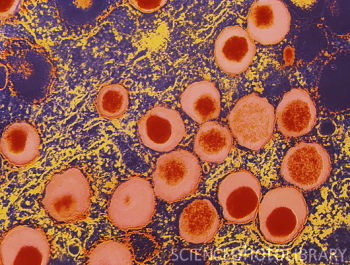
近日,国际期刊Diabete在线发表了中科院上海生命科学研究院营养所翟琦巍研究组的研究论文WldS enhances insulin transcription and secretion via a SIRT1-dependent pathway and improves glucose homeostasis。该研究首次揭示了WldS (Wallerian degeneration slow) 蛋白可以通过NAD-SIRT1信号通路促进胰岛素的转录和分泌并改善机体的葡萄糖稳态。
胰岛素分泌的绝对或相对不足是诱发糖尿病的重要原因。胰岛素主要在胰岛β细胞合成并分泌。增强胰岛β细胞的功能,保护胰岛β细胞免受损伤是预防和治疗糖尿病的主要途径之一。SIRT1是依赖于NAD的蛋白去乙酰化酶,以前被发现可以调控胰岛素的分泌。但SIRT1的该作用是否可以被NAD或NAD合成酶所调控还不太清楚。
为阐明NAD水平是否可以通过SIRT1调节胰岛素和葡萄糖稳态,翟琦巍研究组博士研究生吴晶霞等选用了一种具有高NAD合成酶活性的自发突变小鼠,WldS小鼠。该小鼠被发现可以显著缓解沃勒氏退变(Wallerian degeneration)等神经元轴突的退变。这一作用与该小鼠表达的一种融合蛋白WldS直接相关。WldS蛋白的羧基端为全长的小鼠烟酰胺核苷腺苷酰转移酶1(nicotinamide mononucleotideadenylyltransferase 1,NMNAT1)。NMNAT1是NAD生物合成过程中一个非常重要的酶,WldS蛋白具有NMNAT1的NAD合成活性。
吴晶霞等发现:WldS蛋白在胰腺中有高表达,WldS小鼠呈现高胰岛素和更好的葡萄糖耐受能力,但不影响胰岛素的敏感性。WldS小鼠可以抵抗高脂饲料诱导的葡萄糖不耐受性,缓解链脲佐菌素引起的高血糖症。进一步研究发现,WldS可以促进胰岛素的分泌,还可以通过其NAD合成酶活性促进胰岛素的转录,并减缓链脲佐菌素引起的高血糖症。体内和体外的研究表明,上述功能均依赖于SIRT1。WldS可以上调NAD水平,并能和SIRT1共沉淀,同时可以通过SIRT1降低解偶联蛋白UCP2的表达,并提高胰岛中的ATP水平从而影响胰岛素分泌。
该研究结果显示,促进β细胞中的NAD生物合成从而提高SIRT1活性是一种潜在的预防和治疗糖尿病的新途径。(生物探索)
相关英文论文摘要:
WldS Enhances Insulin Transcription and Secretion via a SIRT1-Dependent Pathway and Improves Glucose Homeostasis
OBJECTIVE WldS (Wallerian degeneration slow), a fusion protein from a spontaneous mutation containing full-length nicotinamide mononucleotide adenylyltransferase 1, has NAD biosynthesis activity and protects axon from degeneration robustly. NAD biosynthesis is also implicated in insulin secretion in β-cells. The aim of this study was to investigate the effect of WldS on β-cells and glucose homeostasis.
RESEARCH DESIGN AND METHODS Using the WldS mice, we measured the expression of WldS in pancreas and analyzed the effect of WldS on glucose homeostasis. The direct effect of WldS on insulin transcription and secretion and the related mechanisms was measured in isolated islets or β-cell lines. Silent information regulator 1 (SIRT1), an NAD-dependent protein deacetylase, is involved in insulin secretion. Thus, WldS mice with SIRT1 deficiency were generated to study whether the SIRT1-dependent pathway is involved.
RESULTS WldS is highly expressed in the pancreas and improves glucose homeostasis. WldS mice are resistant to high-fat diet–induced glucose intolerance and streptozotocin (STZ)-induced hyperglycemia. WldS increases insulin transcription dependent on its NAD biosynthesis activity and enhances insulin secretion. SIRT1 is required for the improved insulin transcription, secretion, and resistance to STZ-induced hyperglycemia caused by WldS. Moreover, WldS associates with SIRT1 and increases NAD levels in the pancreas, causing the enhanced SIRT1 activity to downregulate UCP2 expression and upregulate ATP levels.
DISCUSSION Our results demonstrate that WldS combines an insulinotropic effect with protection against β-cell failure and suggest that enhancing NAD biosynthesis in β-cells to increase SIRT1 activity could be a potential therapeutic approach for diabetes.







